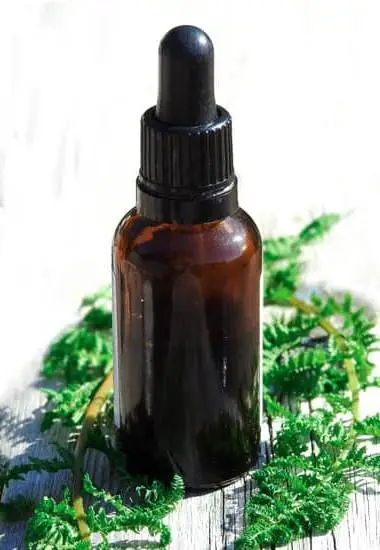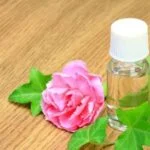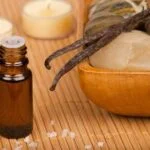How does aromatherapy work topically to provide therapeutic benefits? Aromatherapy, also known as essential oil therapy, is a holistic healing treatment that uses natural plant extracts to promote overall well-being. This introductory section will delve into the basics of aromatherapy, its benefits, and how it works when applied topically.
Aromatherapy has been used for centuries as a natural remedy for various health issues, including stress relief, relaxation, and skincare. Essential oils are the foundation of aromatherapy and are extracted from different parts of plants through methods like steam distillation or cold pressing. These potent oils possess unique therapeutic properties that can positively impact physical, emotional, and mental health when used correctly.
On a physiological level, topical application of essential oils allows for direct absorption through the skin, where they can penetrate the bloodstream and reach target areas in the body. In this section, we will explore the science behind how aromatherapy works when applied topically and its effects on our overall well-being. Understanding the mechanisms at play will help us appreciate the power of essential oils in promoting holistic health and wellness.
Exploring the Power of Essential Oils
Essential oils are potent and concentrated plant extracts that are obtained through different extraction methods. Understanding the process of extracting essential oils and their therapeutic properties is crucial in maximizing the benefits of aromatherapy when applied topically.
Extraction Methods
There are various methods used to extract essential oils from plants, including steam distillation, cold pressing, and solvent extraction. Steam distillation is the most common method and involves using steam to separate the oil from the plant material. Cold pressing is often used for citrus oils, where the oil is pressed out from the rind of the fruit. Solvent extraction, on the other hand, uses chemical solvents to extract the oil from the plant material.
Therapeutic Properties
Each essential oil contains a unique combination of compounds that give it specific therapeutic properties. For example, lavender essential oil is known for its calming and soothing effects, while tea tree oil has antimicrobial properties. Understanding these properties can help in choosing the right essential oils for topical application based on individual needs and health concerns.
Knowing how essential oils are extracted and their therapeutic properties is essential in harnessing the full potential of aromatherapy when used topically. The next section will delve into how aromatherapy works on a physiological level when applied topically.
The Science Behind It
Aromatherapy is a holistic healing treatment that uses natural plant extracts, known as essential oils, to promote physical and emotional well-being. The use of aromatherapy can be traced back to ancient civilizations, where it was used for its therapeutic benefits. When applied topically, essential oils are absorbed through the skin and into the bloodstream, where they can exert their physiological effects.
So, how does aromatherapy work topically? The answer lies in the chemical composition of the essential oils. These oils contain various bioactive compounds that have been shown to have therapeutic effects on the body. When applied topically, the molecules of these essential oils can penetrate the skin and enter the bloodstream, where they can interact with different systems in the body.
- One of the key ways in which aromatherapy works when applied topically is through inhalation. When essential oils are absorbed through the skin, they can also be inhaled as their volatile molecules evaporate. This allows them to directly affect the limbic system in the brain, which is responsible for emotions and memory.
- Another physiological mechanism by which aromatherapy works topically is through skin absorption. The permeability of the skin allows for essential oil molecules to enter into the bloodstream and reach different parts of the body, where they can exert their therapeutic effects.
It’s important to note that not all essential oils are suitable for topical application, and some may cause adverse reactions if not properly diluted or used with a carrier oil. Understanding how specific essential oils work on a physiological level when applied topically is crucial in harnessing their full potential for health and well-being.
Choosing the Right Carrier Oil
One of the most important aspects of choosing a carrier oil is its ability to penetrate the skin easily without leaving a greasy residue. Some popular carrier oils include coconut oil, jojoba oil, sweet almond oil, and olive oil. Each carrier oil has its own unique properties and benefits, and the choice of which one to use can depend on personal preference and the specific needs of the individual.
Additionally, carrier oils can also provide their own therapeutic benefits when combined with essential oils. For example, coconut oil is known for its moisturizing properties, while jojoba oil closely resembles the natural sebum of the skin. This makes them excellent choices as carriers for essential oils that are meant for skincare or massage purposes.
In summary, choosing the right carrier oil is an important step in reaping the full benefits of aromatherapy when applied topically. The right carrier oil can enhance the effectiveness of essential oils and provide additional therapeutic benefits on its own. It’s important to consider individual skin type and sensitivities when selecting a carrier oil for topical aromatherapy applications.
| Carrier Oil | Main Benefits |
|---|---|
| Coconut Oil | Moisturizing properties |
| Jojoba Oil | Resembles natural sebum of the skin |
| Sweet Almond Oil | Rich in vitamins A, B, and E |
| Olive Oil | Natural antioxidant properties |
Topical Application Methods
Direct Application
One of the simplest ways to apply essential oils topically is through direct application. This method involves applying a small amount of undiluted essential oil directly onto the skin. It is important to note that not all essential oils can be used for direct application, as some may cause skin irritation or sensitivity. Therefore, it is crucial to perform a patch test before using any essential oil directly on the skin.
Massage
Another popular method of topical application is through massage. Essential oils can be diluted in a carrier oil and then massaged into the skin. This method not only allows for the absorption of the essential oils but also provides therapeutic benefits through the act of massage itself. The combination of touch and aroma enhances relaxation and offers relief from muscle tension and stress.
Compress
Using a warm or cold compress infused with essential oils is another effective way to apply them topically. For a warm compress, dilute essential oils in hot water, soak a cloth in the mixture, wring it out, and then place it on the affected area. For a cold compress, dilute essential oils in cold water and follow the same process. Compresses are often used for pain relief, inflammation reduction, and relaxation.
These different methods of applying essential oils topically provide various benefits depending on individual needs and preferences, enhancing overall well-being when incorporated into daily routines. Understanding which method suits specific health concerns best will ensure maximum benefits from aromatherapy when used topically.
Common Uses and Benefits
Aromatherapy has been used for centuries as a natural remedy for various health issues, and when applied topically, it can provide numerous benefits. Here are some common uses and benefits of aromatherapy when used topically:
1. Pain relief: Essential oils such as peppermint, eucalyptus, and lavender have analgesic properties that can help alleviate pain when applied directly to the skin. Whether it’s muscle aches, headaches, or menstrual cramps, these essential oils can provide relief when massaged onto the affected area.
2. Skin care: Many essential oils have powerful anti-inflammatory and antibacterial properties that make them ideal for skincare. Tea tree oil is known for its ability to fight acne and treat various skin conditions, while rosehip oil is highly valued for its anti-aging properties.
3. Stress and anxiety reduction: When inhaled or applied topically, certain essential oils like chamomile, bergamot, and frankincense can help calm the mind and promote relaxation. Applying these oils to pulse points or the soles of the feet can have a soothing effect on the nervous system.
4. Digestive support: Some essential oils such as ginger and peppermint have been traditionally used to aid digestion and relieve symptoms of indigestion or nausea. When diluted with a carrier oil, they can be massaged onto the abdomen to promote healthy digestion.
5. Immune support: Essential oils like tea tree, lemon, and oregano have antimicrobial properties that can be beneficial for supporting the immune system when applied topically. They can be diluted in a carrier oil and applied to the chest or bottoms of the feet to help boost immunity.
Understanding how does aromatherapy work topically is important in maximizing its effectiveness for various health concerns. It’s crucial to follow safety precautions such as proper dilution and patch testing before using any essential oil topically to prevent adverse reactions on the skin.
Safety Precautions
Aromatherapy is a popular holistic healing treatment that harnesses the therapeutic properties of essential oils to promote physical and emotional well-being. When applied topically, aromatherapy can provide targeted relief for various health issues, from stress and anxiety to muscle pain and skin conditions. However, it’s important to understand how to use essential oils safely to prevent adverse reactions.
One of the most crucial safety precautions when using essential oils topically is dilution. Essential oils are highly concentrated and can cause irritation or sensitization if applied directly to the skin at full strength.
Diluting essential oils in a carrier oil not only helps to reduce the risk of adverse reactions but also allows for better absorption into the skin. The generally recommended dilution ratio is 2-3 drops of essential oil per teaspoon of carrier oil, but this can vary depending on the specific essential oil and individual sensitivity.
In addition to dilution, patch testing is another important safety measure when using essential oils topically. Patch testing involves applying a small amount of diluted essential oil to a small area of skin and monitoring for any adverse reactions over 24-48 hours. This simple step can help identify any potential sensitivities or allergies before using the essential oil more extensively. By incorporating these safety precautions into your aromatherapy practice, you can enjoy the benefits of topical application with confidence.
| Safety Precautions | Importance |
|---|---|
| Dilution | Reduces risk of adverse reactions, allows for better absorption |
| Patch Testing | Identifies potential sensitivities or allergies before extensive use |
Conclusion
In conclusion, aromatherapy is a powerful tool for promoting holistic well-being when used topically. Essential oils have been used for centuries for their therapeutic properties, and when applied to the skin with the right carrier oils, they can have a profound impact on our physiological and emotional health. Understanding how different essential oils work and choosing the right carrier oil are essential in maximizing the benefits of aromatherapy.
The science behind aromatherapy reveals that when applied topically, essential oils can penetrate the skin and enter the bloodstream, where they can exert their therapeutic effects on various bodily systems. From reducing stress and anxiety to alleviating muscle pain and improving skin conditions, aromatherapy offers a wide range of benefits for our overall well-being. Knowing how to properly dilute essential oils and test for potential adverse reactions is crucial in ensuring that aromatherapy is used safely and effectively.
In today’s fast-paced world, incorporating aromatherapy into our daily self-care routines can provide much-needed relief and support for our physical and emotional health. By learning about different topical application methods and understanding the specific uses of essential oils, we can harness the power of aromatherapy to promote holistic well-being in our lives.
As we continue to explore the potential of aromatherapy, it is clear that this ancient practice has much to offer in enhancing our quality of life.
Frequently Asked Questions
How Do Essential Oils Work When Applied Topically?
Essential oils work when applied topically by being absorbed into the skin and then entering the bloodstream. From there, the compounds in the essential oils can have various effects on the body, such as promoting relaxation or reducing inflammation.
Can You Put Aromatherapy on Your Skin?
Yes, you can put aromatherapy on your skin by diluting essential oils with a carrier oil and applying them to the skin. This allows the beneficial properties of the essential oils to be absorbed through the skin and provide their intended effects.
Can Aromatherapy Be Delivered Through the Skin?
Aromatherapy can be delivered through the skin via topical application of diluted essential oils. When applied to the skin, the compounds in the essential oils can be absorbed into the bloodstream and have therapeutic effects on the body and mind. This method is a popular way to utilize aromatherapy for various health and wellness benefits.

Are you looking for a natural way to improve your health and wellbeing?
If so, aromatherapy may be the answer for you.





